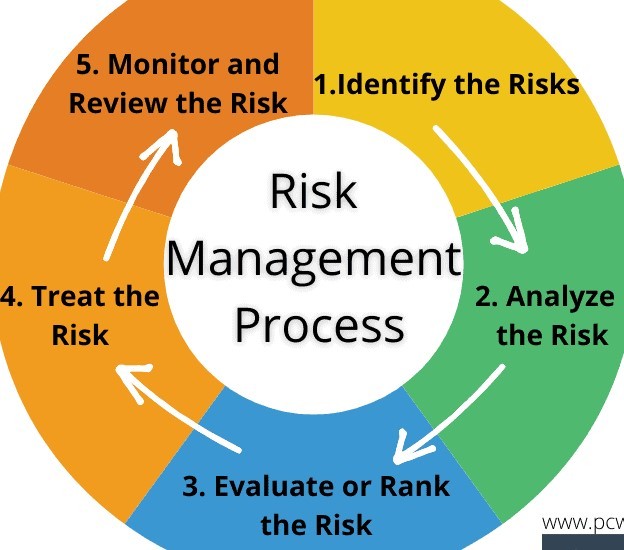The Importance and Importance of Risk Management in Ensuring Corporate Continuity
The Importance and Importance of Risk Management in Ensuring Corporate Continuity
Blog Article
The Critical Relevance of Risk Management in Achieving Business Goals
This is where Risk Management actions in, supplying a structured method to identifying, evaluating, and mitigating prospective obstructions to proceed. As we explore the critical duty of Risk Management in achieving organizational goals, one can't assist but ask yourself: exactly how does this translate right into real-world success?
Recognizing the Concept of Risk Management in Organization

The Indispensable Duty of Risk Management in Strategic Preparation
Integrating Risk Management right into calculated planning acts as a secure for companies, securing their long-term plans with a strong foundation of readiness and durability. Risk Management provides a framework for preparing for unpredictabilities and developing suitable actions, making sure the organization's survival and success even in the face of adversity. By including Risk Management right into tactical preparation, organizations can change these uncertainties right into chances for growth and technology.

Methods for Identifying, Assessing, and Prioritizing Threats
Navigating the complex landscape of threats needs the application of specific strategies for their analysis, recognition, and prioritization. The process begins with Risk identification, utilizing devices such as SWOT evaluation, which assists in determining possible threats and opportunities. Next off, Risk analysis is conducted to determine the possible impact and chance of each Risk. Tools such as Risk matrices and impact-probability charts are used for this. Lastly, risks are focused on based on their prospective effect and chance, permitting organizations to focus their resources on high-priority dangers. This methodical approach makes sure a comprehensive understanding of the Risk landscape, allowing companies to make enlightened choices and efficiently handle dangers to attain their goals - importance of risk management.
Securing Organizational Procedures Through Efficient Risk Management
In the service landscape filled with uncertainties, effective Risk Management this post plays a critical duty in guarding business procedures. By determining and assessing possible risks, Risk Management allows companies to develop durable contingency plans. Organizations need to spend in extensive Risk Management strategies to protect their operations.

Converting Potential Risks to Opportunities: The Power of Risk Management
While possible threats could originally show up as obstacles to business success, efficient Risk Management can transform them into chances. A positive technique to run the risk of Management involves recognizing, evaluating, and prioritizing threats to develop methods that turn them right into potential benefits. This procedure demands the advancement of a risk-aware culture within the company, encouraging people to watch risks as potential drivers for modification and growth, instead of plain hazards. importance of risk management. Via this lens, possible threats become chances to innovate, boost procedures, and strengthen durability. Hence, by leveraging the power of Risk Management, organizations can not only guard their procedures but likewise stimulate development and accomplish their objectives in an unforeseeable business environment.
Situation Studies: Success Stories of Risk Management Driving Business Objectives
Effective execution of Risk Management methods has produced impressive outcomes in numerous businesses, emphasizing the values of this approach. Multinational firms like Microsoft and Google, for instance, have leveraged Risk Management to minimize dangers and manipulate opportunities, driving their organization objectives forward. These instances highlight how successful Risk Management can not just guide services clear of possible pitfalls however additionally guide them in the direction of their tactical objectives.
Final thought
In conclusion, Risk Management is basically essential redirected here in accomplishing organizational objectives. It supplies a systematic technique to determining, analyzing, and dealing with prospective threats and opportunities. Greater than just mitigating dangers, it likewise promotes technology, strength, and lasting growth. By incorporating Risk Management right into strategic planning, businesses can better browse unpredictabilities, protect operations, and capitalise on chances, consequently lining up look at this now with long-lasting purposes.
At its core, Risk Management is the process of determining, evaluating, and attending to prospective dangers that might negatively influence an organization's goals or operations. Next off, Risk analysis is carried out to ascertain the possible impact and likelihood of each Risk. Dangers are prioritized based on their possible effect and likelihood, allowing companies to focus their resources on critical risks. By recognizing and examining prospective threats, Risk Management allows organizations to develop durable contingency strategies. A positive approach to take the chance of Management entails identifying, evaluating, and prioritizing threats to develop approaches that turn them right into potential benefits.
Report this page